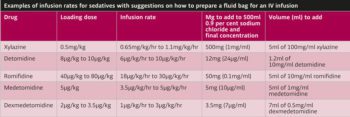7 Mar 2023
Ilaria Petruccione, DVM, MRCVS provides an overview of anaesthesia usage with a focus on the latest updates in standing sedation techniques.

Image: © Countrypixel / Adobe Stock
General anaesthesia in horses still carries a high mortality risk. The preliminary results of the Confidential Enquiry into Perioperative Equine Fatalities (CEPEF) 4 show a net improvement of the mortality rate for non-colic cases (0.6% versus 0.9% in CEPEF 2).
For the first time, the study also included standing sedation, for which the mortality rate is reported to be 0.2%. Despite the improvement, the mortality rate is still significantly high compared to human or small animal anaesthesia.
For this reason, the choice of the method should be multifactorial and the owner should be informed regarding the risks carried by general anaesthesia. Standing sedation is also increasing in popularity for this reason.
Horses are prey species, driven by their sympathetic nervous system – that is, they will tend to “flight” away from any new situation. Physical restraint alone is often insufficient – especially when painful interventions are required. Therefore, to safely perform surgical and medical procedures, it is often necessary to immobilise the horse.
No single drug produces “ideal” chemical restraint in every horse. Drugs are used in combination to optimising the onset, quality and duration of sedation while minimising side effects.
Sedatives and anaesthetic drugs act on a wide range of organ systems – including the brain, heart, blood vessels and lungs – to achieve their effect.

The interactions between sedative and/or anaesthetic drugs, and these organs and system, are complex and occasionally may be unpredictable. For this reason, before any treatment is administered, a full history – including details of patients, such as age, vaccination status, previous and current disease – should be obtained. Before making a final choice of agent, method and route of administration, the following factors need to be considered:
The efficacy of any sedative or anaesthetic agent can be influenced by individual variation in response to the drug’s actions and also by external factors (such as the level of noise/distraction) which may be difficult to control.
The animal should be left undisturbed. It is important take into account these circumstances and allow sufficient time for the drug to produce an effect. Bear in mind, sedated horses may be still arousable and kick or bite.
Standing sedation is commonly used to perform surgical and medical procedures in horses when general anaesthesia is not warranted or desired. Advantages of standing sedation over general anaesthesia include:
Disadvantages of standing sedation could include:
A multimodal, balanced approach by supplementing sedatives and tranquillisers with systemic analgesic or loco-regional anaesthetic techniques will facilitates standing procedures. Therefore, the choice of the appropriate drug combination is essential to achieve an adequate level of sedation for the procedure.
Patient evaluation should always be performed as it would be prior to general anaesthesia. Horses not used to being handled or in exacerbated pain may not be the best candidates for standing sedation. Specific preparation may be required (such as fasting prior to laparoscopic surgery).
The procedure should be carried out in a quiet location and the patient should become accustomed to this environment before any drug administration.
This is important when drugs are administered by the oral or IM route to avoid delayed onset of action. An IV catheter should always be aseptically placed to facilitate drugs administration and avoid perivascular or intracarotid injection.
Demeanour, cardiovascular (heart rate, capillary refill time, peripheral pulse quality), respiratory parameters and degree of ataxia should be monitored to detect excessive sedation or drug-induced side effects.
To improve adjustment of infusion, the Ghent algorithm has been recently published. Albeit, it is strongly advised to be always ready to convert to general anaesthesia in case it is needed.
Drugs are either administered by IM, IV bolus or constant rate infusion during the procedure. IM injection may be performed 30 to 45 minutes before the start of the procedure to reduce the horse’s stress, improve sedation and decrease infusion requirement.
Sedation is mainly based on α2-agonist. An opioid should be included to improve quality of sedation/analgesia. Low doses of either ketamine or lidocaine can be added as part of a balanced protocol to improve sedation and analgesia.
A loco-regional nerve block and epidural injection should be performed wherever appropriate, as they reduce the required level of sedation and augment the patient’s tolerance to the procedure. Recent highlights regarding standing procedures include the following:
The second part of this article focuses on general anaesthesia.